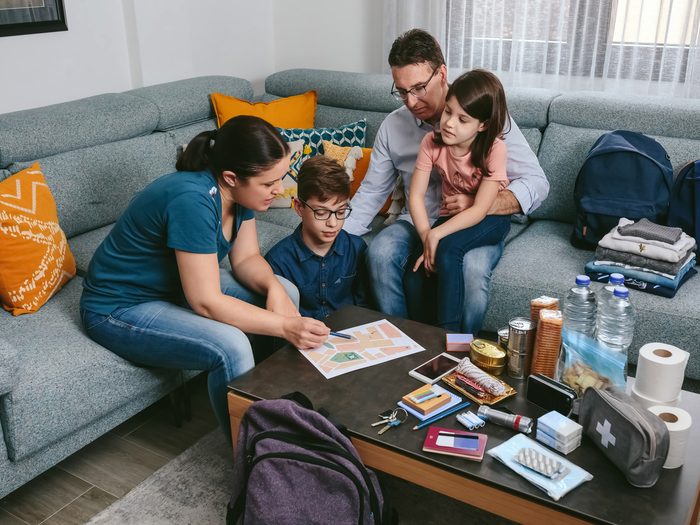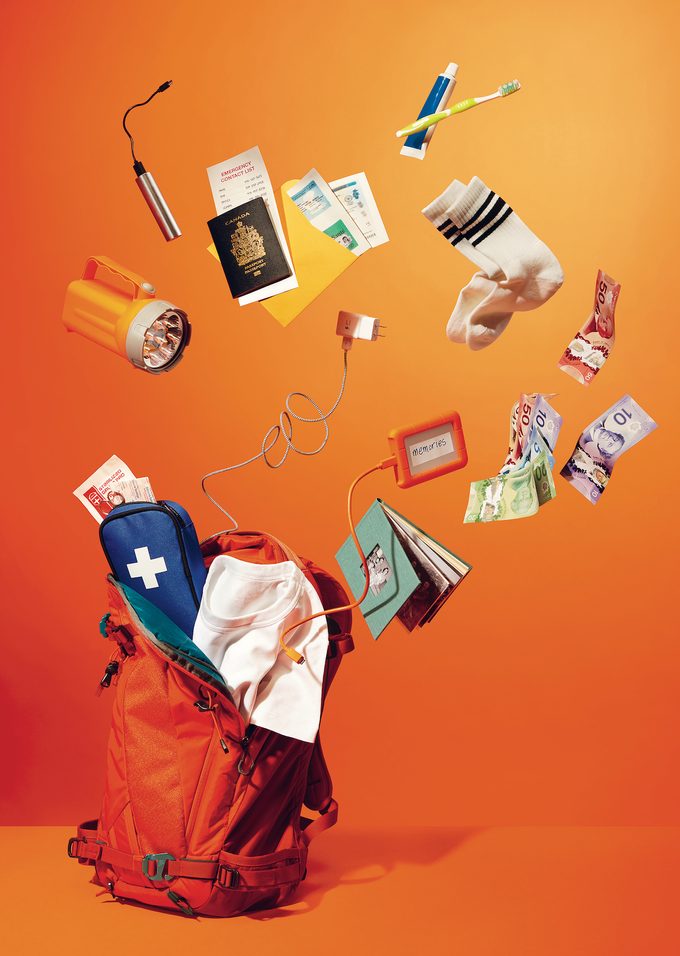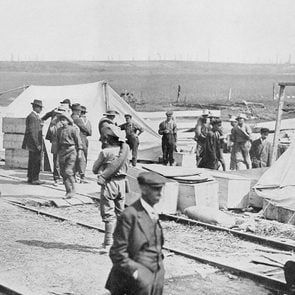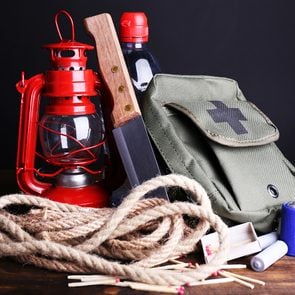How to Prepare for a Natural Disaster

From flooding to fires, here are four simple tips to keep you and your family safe when extreme weather strikes.
Brianna Toor lives with her husband and dog in Oliver, B.C., a small town in the Okanagan Valley. A winemaker and viticulturist, Toor, 35, moved from Victoria four years ago for work. She knew that wildfires were a fact of summer life in the region, but she wasn’t prepared for the sheer size and proximity of the Nk’Mip Creek wildfire, which blazed across the B.C. interior in 2021. Parts of her town, as well as nearby Osoyoos, went on evacuation alert.
Extreme weather events are on the rise across Canada, driven by the climate crisis. Last year saw record heat waves and rainfall reported across the country, as well as above-average hurricane activity in the Atlantic. And, according to the Insurance Bureau of Canada, 2020 was the fourth-worst year on record for natural disasters in Canada, with floods, heat waves and storms causing an estimated $2.4 billion in insured damage. Climatologists predict worsening disasters in the coming years.
And yet, a 2014 survey found that, while 98 per cent of Canadians had participated in some kind of emergency planning activity, only 69 per cent had an emergency contact list and just under half had a home emergency kit. Toor was prepared and had a bag packed for an evacuation, but she still felt shocked that they might be forced to leave their home.
By taking just a few preventive steps, you can alleviate the potential physical, mental and financial impacts of a natural disaster on you and your family.
Know Your Risks
Consult your community’s Emergency Response Plan to learn what risks you need to be prepared for and how you and the community can help mitigate them. “What we hear most often is, ‘I didn’t think this would happen to me, so I wasn’t prepared,’” says Dave Fraser, an emergency-management responder with the Canadian Red Cross who has been deployed to many disaster sites, including wildfires in Saskatchewan and to New Jersey after Hurricane Sandy hit the state.
Fraser lives in Ottawa, where proximity to the Ottawa River and the Rideau Canal, combined with possible heavy rainfall, makes flooding a risk. He takes preventive actions like making sure his eavestroughs are clean and that his downspouts carry water well away from his home’s foundation. When there’s a flood warning, he moves valuables out of his basement.
It’s also important to familiarize yourself with the information sources and alert systems you’ll need to consult in case of an emergency. Depending on where you live, those sources may include local media, weather apps and conservation authorities.
Understanding what the risks are helps you develop an appropriate plan of action and can also quell some of the stress caused by the unknown. “The best way to prepare mentally is to prepare physically,” says Fraser.
Make a Plan
Your emergency plan should lay out safe ways to evacuate your home, the spot where you and your family will meet if you need to evacuate while people are at work or at school, how you’ll communicate with each other, and emergency contacts you can call.
Include two meeting spots: one nearby that you can go to in case of a localized event like a house fire and one outside your neighbourhood in case of a more widespread disaster. Don’t forget to arrange for your pets, too. Some evacuation centres don’t allow pets, so it’s a good idea to have a boarding plan.
Once you’ve made your plan, practise it! The Red Cross advises families to rehearse their plans twice a year, when the clocks change. These are also good times to test your smoke alarms and carbon monoxide monitor. Practising your plan will ensure that you and your family are better able to act when you have to.

Collect an Emergency Kit
In the event of a shelter-in-place order, you should be prepared to survive for a minimum of three days at home. Your home kit should include food, water, first-aid materials, medication and medical equipment, flashlights and a radio (plus backup batteries), spare sets of keys and any other supplies you need to survive for 72 hours.
The Red Cross also advises Canadians to have a “go bag”—it can be any bag that’s easy to carry—ready in the event that rapid evacuation is necessary. Toor and her husband’s go bag has copies of their passports, identification and important documents, plus cash, personal hygiene items, water bottles and extra clothes.
You can also include a phone charger, snacks, emergency contact lists, a back-up drive with photos and small items you can’t live without. Store your go bag in an easy-to-access location, like a closet near the front door. If you own a vehicle, it’s a good idea to have a car emergency kit in the trunk.
Fraser reminds people that in an emergency, cash is king. Ensure you have enough on hand to cover immediate needs, such as gas and food.
Do Your Part
Last year, over 1,500 wildfires in B.C. burned more than 868,600 hectares—including the entire village of Lytton. By the end of July, the Nk’Mip Creek wildfire forced the evacuation of at least 248 households in Toor’s area. Luckily, she and her husband weren’t among them. Still, the stress of living under constant threat was exhausting. For a month, she could see the fire blazing around her every time she stepped outside. She frequently checked the evacuation alert online.
“It really affected my mental health,” says Toor, adding that one of the hardest things about living in a wildfire zone is feeling powerless in the face of climate change. She’s made more eco-conscious choices in her daily life. She cycles about six kilometres every day to the vineyard instead of driving. She’s smarter about how often she waters her garden. At the winery, she’s reduced water usage and encourages other growers and winemakers to do the same.
For Fraser, taking action has meant sharing his emergency response plan with his neighbours. He recommends maintaining relationships with elderly neighbours and regularly checking in. These bonds can be critical in an emergency. Being prepared, he says, can go a long way toward increasing your resilience to natural disasters.
Think it could never happen here? Read up on the worst natural disasters in Canada’s history.






